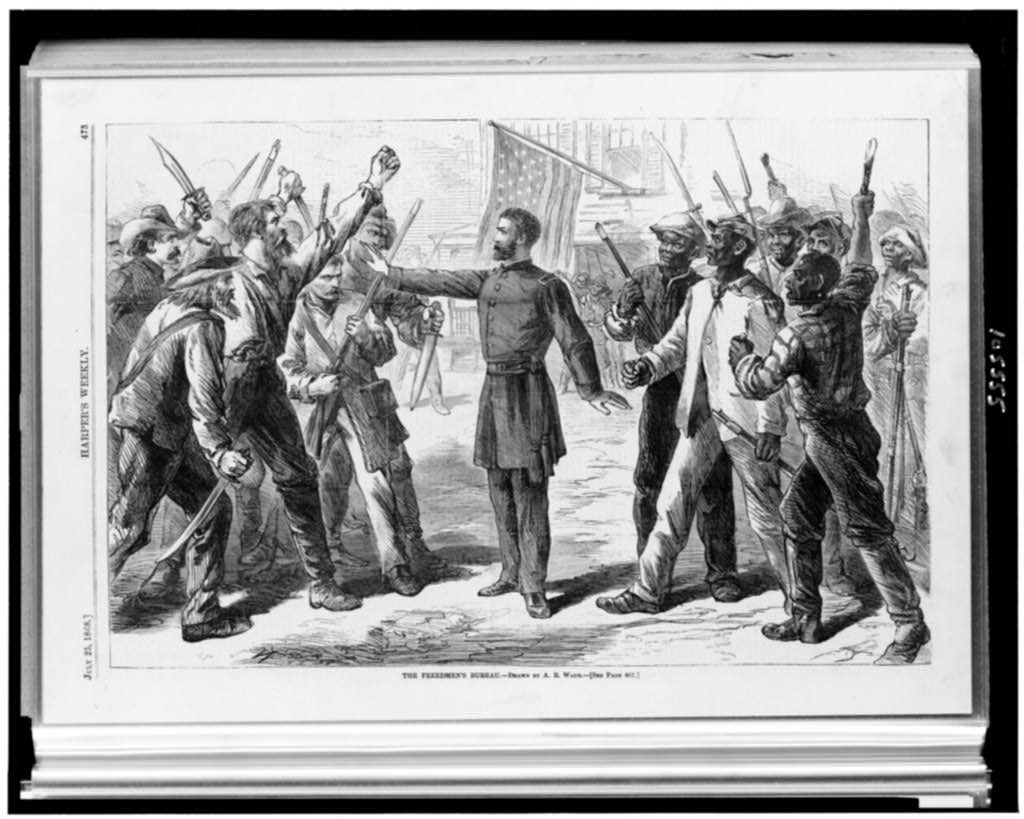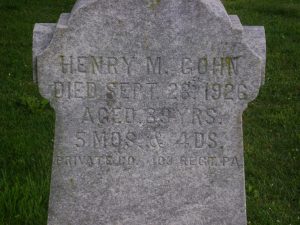2nd Company G: A Short and Atypical Service
During the gap between graduate school semesters, I’ve been taking some time to look at family trees and genealogy. After all, staring at old records is my specialty, and apparently, I can’t convince myself to just take a break! In this particular case, I was investigating my fourth-great grandfather (through marriage), Henry Melvin Gohn, who served in the Civil War. A lifelong resident of York County, Pennsylvania, his service was unusual but nevertheless important.

Born in 1837 to Henry D. Gohn, the younger Henry was a member of a well-rooted family that traced its York County lineage to a Revolutionary War veteran. For most of the Civil War, Gohn stayed home. Perhaps he wanted to stay near his family, and he had recently married. This changed, however, as the war near the very end. Perhaps he felt an obligation to serve, perhaps he was influenced by his brother’s recent enlistment in the 15th Pennsylvania Cavalry, or perhaps the enticement of a large bounty proved convincing. In the spring of 1865, he mustered into 2nd Company G of the 103rd Pennsylvania Infantry, a strangely enumerated company with a similarly unusual service record.
The 103rd Pennsylvania had been whittled away by years of hard service in both the Fourth Corps and the Department of North Carolina, and much of the regiment had been captured at the siege of Plymouth. New replacement companies were raised for the term of one year in order to be consolidated with the regiment in early 1865.[1] In hindsight, we sometimes see the end of the war as inevitable, which might lead us to question recruitment in 1865. It is important to note that Americans did not know that General Lee would surrender on April 9 at Appomattox, as well as the fact that Appomattox did not end the war. Various scattered surrenders occurred over the next few months, and Union troops were needed to force that capitulation as well as oversee both emancipation and national reunion.

When Gohn and 2nd Company G arrived on Roanoke Island, North Carolina to meet with the regiment’s veterans, they found an odd situation. Former prisoners of war had also returned to the regiment, and they were much more interested in celebrating than in discipline. The new companies were placed to work patrolling the garrison, while the former prisoners once managed to tunnel out of confinement after being punished for going to a dance.[2] Beyond the humorous anecdote, the regiment was certainly dealing with more serious matters. The end of the war and the emancipation of enslaved peoples had raised many questions. Roanoke Island was also home to a large colony of Freedmen.[3] Formally established by Federal officials in 1863, the seized land was a place for them to make a new start, and the Freedmen’s Colony had a population of several thousand. Gohn and his fellow soldiers offered protection to the burgeoning community, as well as other federal assistance. Unfortunately, in the aftermath of the war the confiscated land was returned, the government reduced aid, and the soldiers left, leading to a sharp decline for this community. Though the colony was not as originally envisioned, for years it had provided a safe haven and community for people beginning a new stage in their life.

In late June the regiment was ordered to New Bern, where they then arranged transportation back to Pennsylvania. On July 13, 1865 the men received their pay for the last time and were discharged. Having served for only a few months of his one-year enlistment, Gohn was now on his way home. He had a rough time after the war, with his first wife dying, another marriage ending in divorce (he had three marriages, and I am “related” to him through his stepson from the second marriage, which made the family tree complicated), a court case against him for aggravated assault, and his barn burning down with most of his livestock in the 1880s. Still, he considered this time in North Carolina important, and his obituary upon his death in 1926 prominently featured his service. Beyond that, his headstone includes the engraving “103 REGT. PA,” and a small Grand Army of the Republic flag holder is encased in concrete behind the headstone. Despite this relatively short term with the Union army, Henry Gohn was proud of his service, and I think that makes it worth mention.
[1] Luther S. Dickey, History of the 103d Regiment Pennsylvania Veteran Volunteer Infantry 1861-1865, (Chicago, IL: L.S. Dickey, 1910), 65.
[2] Ibid, 65-66. Additionally, there is an interesting blog with a variety of information on the company here.
[3] “The Freedmen’s Colony on Roanoke Island,” NPS, https://www.nps.gov/articles/the-freedmen-s-colony-on-roanoke-island.htm
1 Response to 2nd Company G: A Short and Atypical Service